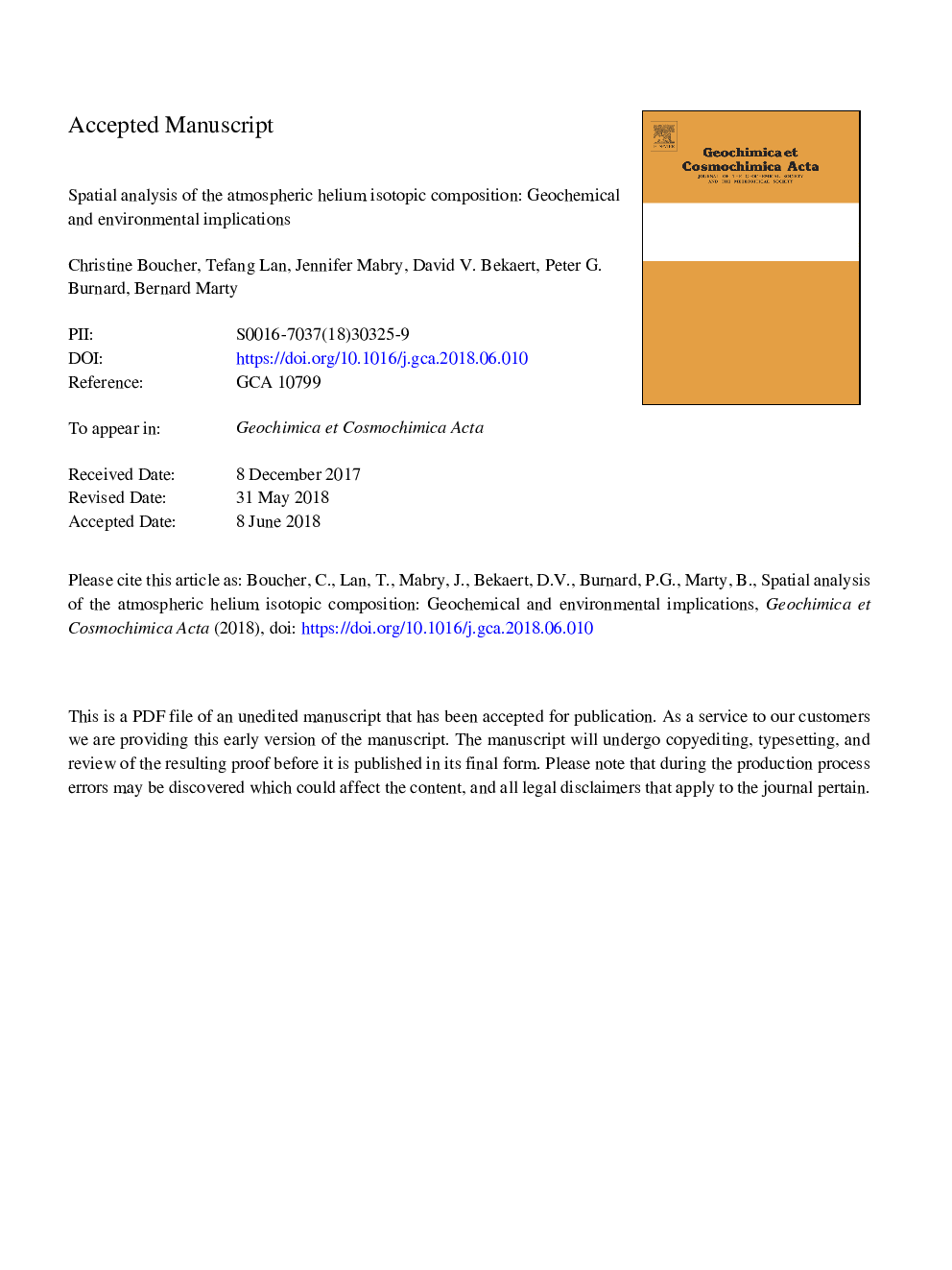| Article ID | Journal | Published Year | Pages | File Type |
|---|---|---|---|---|
| 8910628 | Geochimica et Cosmochimica Acta | 2018 | 26 Pages |
Abstract
Spatial variations in the atmospheric helium isotopic composition (RA = 3He/4Heairâ¯=â¯1.39â¯Ãâ¯10â6) might be induced by localized and/or regional inputs of 3He and/or 4He into the air. It has been suggested that inputs of 4He from hydrocarbon exploitation may generate latitudinal variations in atmospheric 3He/4He. In order to test the possibility of such global variations, we performed high precision analyses of the helium isotopic composition (3He/4He) of sixteen air samples collected in 500â¯cc metal bottles around the world (79°N-75°S) between 2013 and 2015. In most cases, the 3He/4He of these air samples are indistinguishable from that of air sampled around Nancy (France) within â¤2â° (95% confidence interval). Only two air samples, collected at Dome C (Antarctica) and at Tokyo (Japan), exhibit statistically higher 3He/4He ratios interpreted as potential 3He excesses of (2.0â¯Â±â¯1.4)â° and (1.7â¯Â±â¯1.5)â° (95% confidence interval), respectively. Excesses such as these suggest that potential helium isotopic variations in air are likely lower than 4â° and might be generated temporarily by regional and/or local phenomenon (e.g. auroral precipitation, stratospheric to tropospheric exchanges). Thus, this study supports the use of the atmospheric helium isotopic ratio as an inter-laboratory He standard.
Keywords
Related Topics
Physical Sciences and Engineering
Earth and Planetary Sciences
Geochemistry and Petrology
Authors
Christine Boucher, Tefang Lan, Jennifer Mabry, David V. Bekaert, Peter G. Burnard, Bernard Marty,
